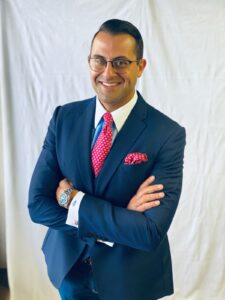Maximizing Stroke Rehabilitation: Dr. Ameer Hassan’s Techniques
Stroke rehabilitation represents a critical phase in the journey of recovery for individuals who have experienced a stroke. As a leading expert in stroke management, Dr Ameer Hassan has dedicated his career to optimizing rehabilitation techniques to maximize functional outcomes and improve the quality of life for stroke survivors. In this article, we explore Dr. Hassan’s innovative approaches to stroke rehabilitation and their impact on patient care.
Dr. Ameer Hassan recognizes that stroke rehabilitation is a multifaceted process that requires a comprehensive and personalized approach. Each stroke survivor presents with unique challenges and goals, necessitating individualized rehabilitation plans tailored to their specific needs. As a vascular neurologist and interventional neuroradiologist, Dr. Hassan brings a multidisciplinary perspective to stroke rehabilitation, drawing upon his expertise in neurology, radiology, and rehabilitation medicine to develop innovative techniques that address the diverse needs of stroke survivors.
Central to Dr. Hassan’s approach to stroke rehabilitation is the concept of neuroplasticity, the brain’s ability to reorganize and adapt in response to injury or disease. Dr Ameer Hassan emphasizes the importance of harnessing the brain’s natural plasticity through targeted interventions that promote recovery and functional reintegration. By engaging in repetitive and task-specific activities, stroke survivors can stimulate neural pathways and facilitate the rewiring of the brain, leading to improved motor function, cognition, and independence.
One of Dr. Hassan’s key techniques in stroke rehabilitation is constraint-induced movement therapy (CIMT), a structured program designed to promote the use of the affected limb while restraining the unaffected limb. By constraining the unaffected limb, CIMT encourages the stroke survivor to actively engage the affected limb in functional activities, such as reaching, grasping, and manipulating objects. This intensive and focused approach helps to overcome learned nonuse and promotes neuroplasticity, leading to gains in motor function and dexterity.
In addition to CIMT, Dr. Hassan incorporates a variety of evidence-based techniques and modalities into his rehabilitation protocols, including task-oriented training, neuromuscular electrical stimulation, and virtual reality therapy. These innovative approaches leverage technology and principles of motor learning to enhance engagement, motivation, and outcomes for stroke survivors. By combining traditional rehabilitation methods with cutting-edge technologies, Dr. Hassan seeks to optimize the efficacy and efficiency of stroke rehabilitation, empowering individuals to achieve their fullest potential.
Beyond physical rehabilitation, Dr. Hassan recognizes the importance of addressing cognitive and emotional challenges commonly experienced by stroke survivors. Cognitive rehabilitation techniques, such as memory training, attentional exercises, and problem-solving strategies, help to restore cognitive function and promote independence in daily activities. Additionally, psychosocial support and counseling play a crucial role in addressing emotional distress, depression, and anxiety, facilitating adjustment and adaptation to life after stroke.
Dr. Hassan’s commitment to maximizing stroke rehabilitation extends beyond the clinic or hospital setting. He advocates for community-based rehabilitation programs and support services that promote continuity of care and facilitate long-term recovery. By engaging stroke survivors in meaningful activities and connecting them with resources and peer support networks, Dr. Hassan aims to foster a sense of belonging and empowerment, enabling individuals to thrive beyond the confines of traditional rehabilitation.
In conclusion, Dr Ameer Hassan techniques in stroke rehabilitation exemplify a holistic and patient-centered approach that prioritizes functional recovery, independence, and quality of life. Through his innovative interventions and unwavering dedication to improving patient care, Dr. Hassan continues to make significant strides in maximizing outcomes for stroke survivors worldwide. As we continue to advance our understanding and capabilities in stroke rehabilitation, Dr. Hassan’s techniques serve as a beacon of hope and inspiration for individuals on the road to recovery.


